Roller Skiing: Experience Cross Country Without Snow
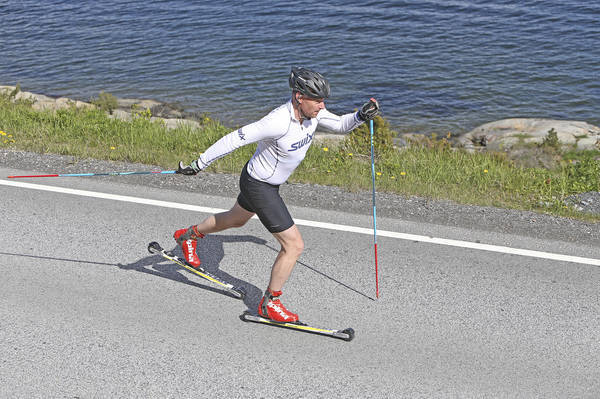
Are you intrigued by the idea of cross-country skiing on wheels? Discover how the sport of roller skiing functions, the techniques involved, and why it offers a comprehensive full-body workout. We will also present practical roller skiing tips to help you train more efficiently and ensure safety.
The adage goes, “Good skiers are made during the summer” – and it rings true. You cannot hope to retain your cross-country skiing fitness over winter if you don't sweat it out in spring, summer, and autumn.
Overview
Overview
Understanding Roller Skiing
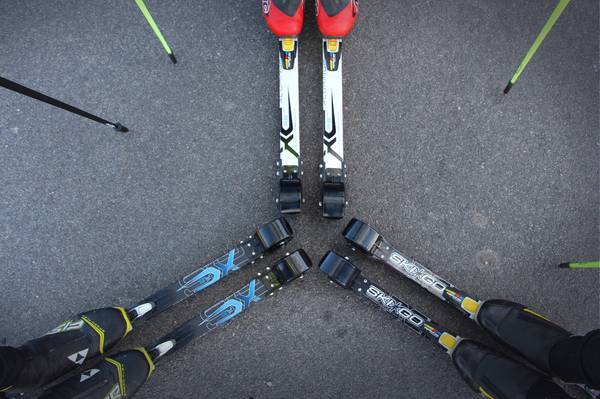
Roller skiing serves as a summer substitute for cross-country skiing by using wheels instead of snow. Athletes employ roller skis, poles, and skiing techniques to replicate the skiing experience. This sport permits you to train all year round, maintaining peak fitness even when snow is absent. Known as cross-country skiing without snow, this phrase is accurate as the movements and muscle engagement are nearly the same.
Roller Skiing: The Perfect Off-Season Cross Country Training
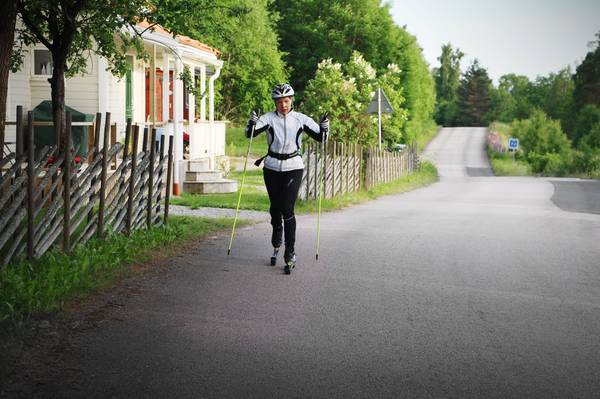
One of roller skiing’s major benefits is enabling athletes to continue cross-country training consistently throughout the entire year. When the snow recedes, roller skiing becomes indispensable for off-season cross-country training. It mirrors the technique, motion, and intensity of snow skiing, working the same muscle groups and cardiovascular systems.
Roller skiing ensures both recreational skiers and elite competitors retain their technique, fitness, and coordination during the warmer months. It is the most efficient way to bridge the seasonal gap, keeping your cross-country regime uninterrupted throughout the year.
How Difficult Is Roller Skiing?
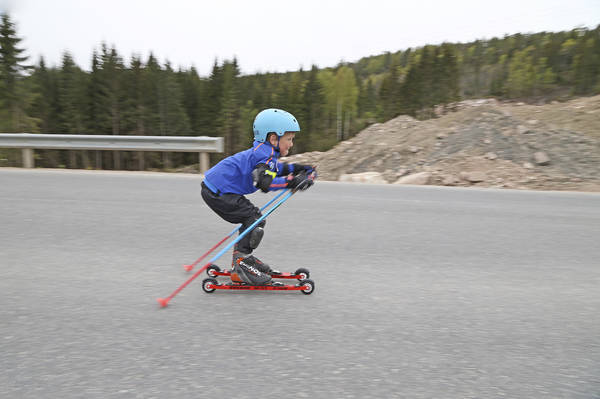
Initially, roller skiing presents a moderate challenge. The technique closely resembles cross-country skiing, so prior skiing experience is beneficial, though not crucial. Most novices require several sessions to become comfortable with balancing, timing, and coordination. Your fitness level and previous sports experience, such as running, skating, or skiing, affect the learning curve.
Prepare for a period of adaptation as you build confidence and control. Practising on flat, smooth surfaces can significantly aid progress. With regular practice, most individuals can develop sound technique and control in just a few weeks.
Why Roller Skiing Offers an Exceptionally Effective Workout
Roller skiing is acknowledged as one of the most complete workouts available, engaging your entire body—arms, core, back, and legs—simultaneously. Consequently, it burns more calories per hour than most other endurance activities. You're not merely moving forward; you’re pushing, gliding, and stabilising in a full-body rhythm.
Besides the physical advantages, roller skiing also enhances mental focus and coordination. It challenges your balance, timing, and technique with each terrain change. Additionally, it is a low-impact activity, gentler on the joints compared to running.
Can Roller Skiing Help Develop Muscle?
Roller skiing enhances the strength of your legs, glutes, and hips through repeated push-offs and gliding phases. It also involves the arms, shoulders, and back during poling. Over time, this repeated motion results in visible muscle toning and improved muscle endurance.
While it doesn't build muscle mass like weight lifting, it fosters lean muscle growth, particularly in the core and lower body. Supplementing your roller-ski training regimen with resistance exercises can amplify this effect.
Essential Roller Skiing Tips for Beginners
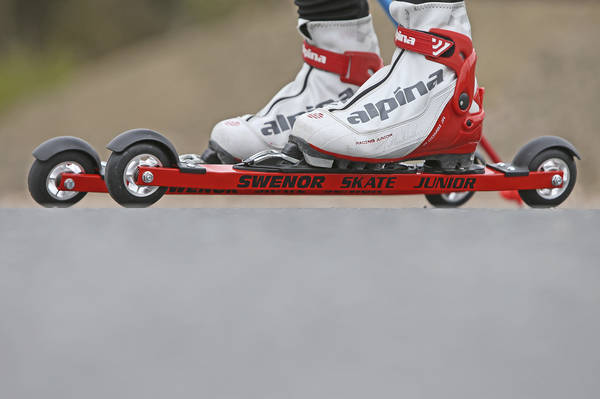
If you are new to roller skiing, these key tips will help you ensure safety and make quicker progress:
- Utilise protective gear: A helmet, gloves, and knee pads are essential
- Start on smooth, flat roads or bike paths with light traffic
- Concentrate on balance and glide before increasing speed
- Use your poles for stability, not only for propulsion
- Improve coordination through brief, controlled sessions
- Include warm-up and cool-down exercises in your routine
Methods for Braking on Roller Skis
Mastering braking early on is crucial. Roller skis lack built-in brakes, thus learning to stop safely requires practice. Rehearse your braking technique on a flat, smooth surface clear of traffic before serious skiing endeavors.
Here are some common methods for halting or slowing down on roller skis:
Snowplough Brake (Classic Technique)
Push your heels outward, forming a “V” shape with the skis, letting the inner edges of the wheels create friction, slowing you on gentle inclines.
Dragging a Pole
Let one pole gently contact the ground behind you while keeping your arm relaxed to create drag and reduce speed.
Dragging a Ski
Similar to braking with inline skates, you can trail one ski behind you, perpendicular to the other. Although challenging, especially with longer skis, it is effective once mastered, but not advised for beginners.
Classic Roller Skiing Technique
The classic technique resembles walking or running, where you glide on one ski while pushing off with the opposite arm and pole. Mastering timing and rhythm is essential.
- Maintain an upright and relaxed upper body
- Shift your weight fully onto each ski
- Drive the poles straight back with your arms
- Keep your kick brief and decisive
This method is suitable for flat to moderate terrain and ideal for building endurance and coordination.
Skating Technique on Roller Skis
The skating technique is more rapid and active. It involves a V-pattern side push-off, akin to ice skating. This approach needs robust leg push and a stable core.
- Prioritise strong lateral movements
- Incorporate double poling for better speed and control
- Engage your core for improved balance
- Practise timing to sustain momentum on inclines
Skating delivers an intense workout and is favoured by advanced users, though beginners can also learn.
